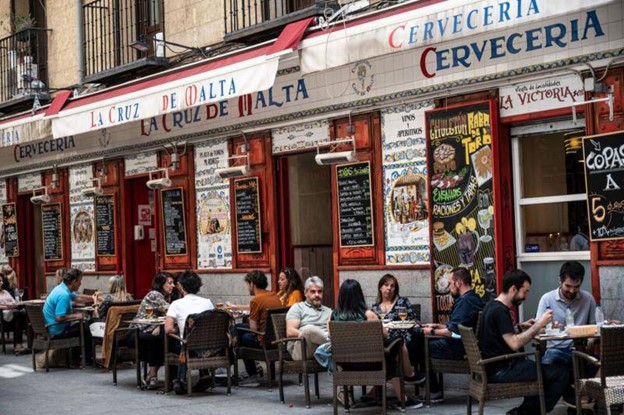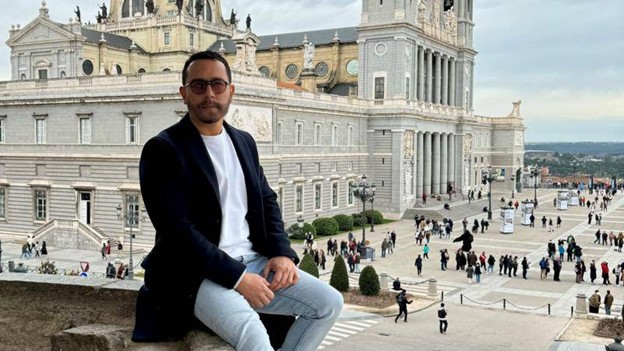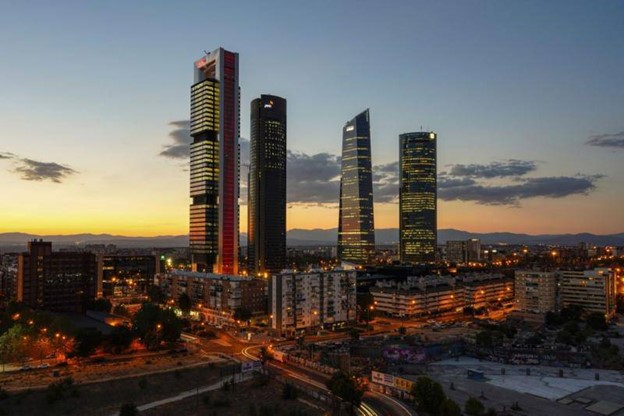Miami was long the benchmark for Latin Americans seeking a better life, especially those with more economic resources and a taste for luxury.
The sunny city of Miami, with its beaches and pleasant temperatures year-round, has recently found an unexpected and thriving competitor across the Atlantic: Madrid.
Since the end of the pandemic, the capital of Spain has emerged as one of the world’s most attractive cities, drawing affluent immigrants who increasingly prefer it over Miami.
Ordinary Madrid residents have long noticed this trend in aspects such as restaurant crowding and rising rental prices.

And the data supports it. In a survey by the New York firm Barnes Global Property, Madrid ranked as the fourth most valued city in the world among individuals with assets exceeding US$30 million.
South Americans predominantly drive this growing interest in Madrid among the global wealthy. They represent 60% of luxury property buyers in the Madrid market, surpassing the British, French, and Americans.
Entire buildings in Madrid’s Salamanca neighborhood, traditionally dominated by local elites, have been purchased by Mexican and Venezuelan buyers, leading some to dub it “Little Caracas.”
According to official data, Mexicans have invested over 700 million euros (US$760 million) in the Spanish real estate market since 2020, with the majority flowing into Madrid.
More foreigners are drawn to Madrid, willing to pay a premium to live there.
“The attraction of Latin American talent and capital to Madrid mirrors what occurred decades ago in Miami, but the scales are balancing, and the day will come when Miami wonders why Madrid is leaving it in the dust,” says José Luis Martínez-Almeida, mayor of Madrid, in conversation with BBC Mundo.
However, this phenomenon also brings challenges, such as rising rent prices, forcing many Madrid residents out of the city center and their traditional neighborhoods.
Recent Trends in Madrid
For decades, Madrid has been a preferred destination for Latin American migrants seeking employment in a Spanish-speaking country.
Peruvians, Ecuadorians, Colombians, and others have long been employed in sectors such as elderly care, construction, and others that often face labor shortages.
While individuals facing hardships continue to arrive in Madrid, there has been a recent influx of affluent Latin American immigrants.
“Most of the clients we assist in immigrating to Spain are financially stable individuals who do not need to work there,” says Alexandre Rangel, general director of Siespaña, a firm specializing in advising foreigners relocating to Spain.
Significant Latin American capital has flowed into Spain in recent years, such as investments by Mexican magnate Carlos Slim and Venezuelan banker Juan Carlos Escotet.
However, there has been a shift towards more modest investments, including real estate purchases for tourist rentals.
What makes Madrid’s old city squares and bars as attractive, if not more, than Miami’s paradisiacal beaches and luxury lifestyle?
Feeling at Home
“The majority of newcomers to Madrid value the quality of life, public services, daily dining options, public transportation, and, above all, the security of living in a safe country, unlike their crime-threatened homelands,” explains Rangel.
Spain offers a stable currency and protection against economic instability, which Latin America often faces.

Venezuelan American Eladio Duque: “In Madrid I felt at home from the first day.” GETTY IMAGES
Eladio Duque, a Venezuelan American who lived in Miami for 12 years, expresses his love for Madrid, where he feels at home.
Madrid offers a sense of community and security that he didn’t experience in Miami. He now runs his Miami business from his Madrid apartment.
Madrid’s welcoming environment extends to its immigration policies, which allow Ibero-American citizens to apply for citizenship after just two years of legal residence, a process much quicker than in the United States.
Furthermore, Madrid’s regional government offers an 85% reduction in tuition fees for Ibero-American students attending public universities, further solidifying Madrid’s appeal as an educational hub.
According to Nuria Vilanova, from Ceapi, “Spain is displacing the United States as the preferred destination for Latin American business leaders’ children,” citing differences in immigration policies as a significant factor.
Challenges Ahead
Despite Madrid’s allure, rising housing costs pose a significant challenge.
Andrés Pradillo, spokesperson for the Madrid Tenants Union, notes that rents in the city have surged 60% since 2015, forcing many families to spend over half their income on housing.
Foreign investors buying properties for speculative purposes exacerbate this issue, leading to the displacement of longtime residents from their neighborhoods.
To address this, Mayor Almeida plans to allocate public land for affordable housing development, aiming to increase the number of available rental units by 4,000 in the coming years.
Additionally, urban development projects like Madrid Nuevo Norte and Operation Camp aim to alleviate the housing shortage.
As Madrid continues to attract residents and investments, balancing growth with inclusivity remains a crucial task for city officials.
Only time will tell whether Madrid can maintain its newfound status as a global hotspot while preserving its diversity and affordability.


We, Latin Americans, in some way consider Spain our motherland. Maybe more so the older generations who grew up before the revision of history and the recognition of injustice in the exploration and conquest period.